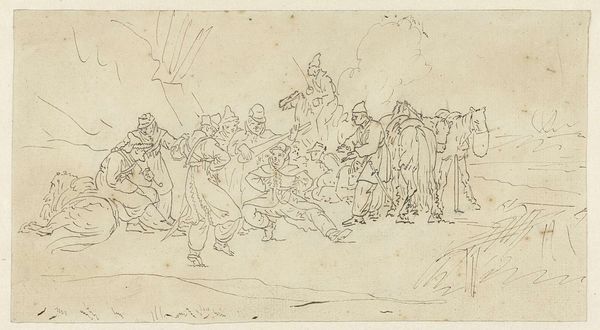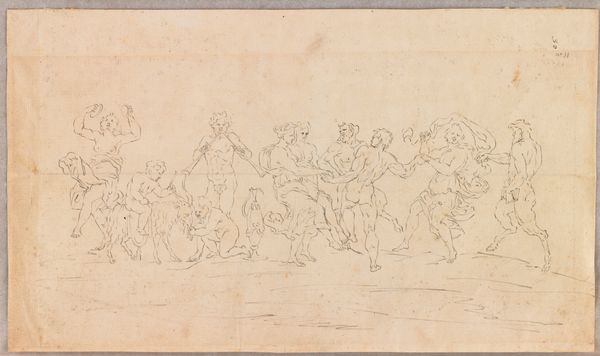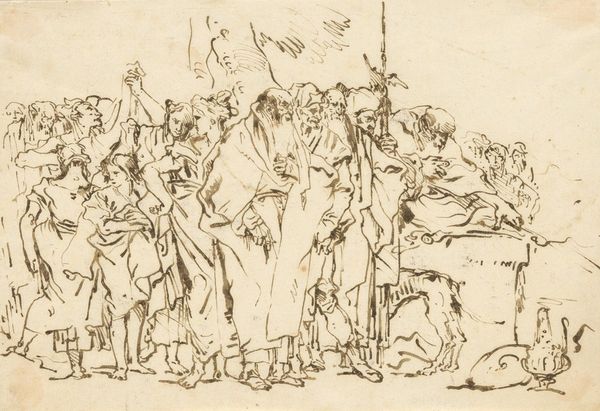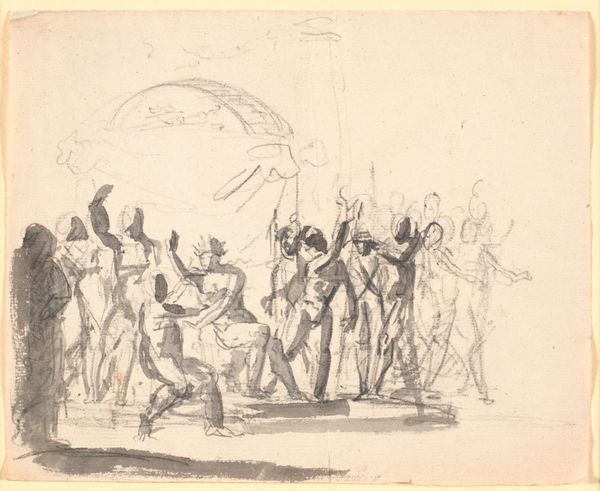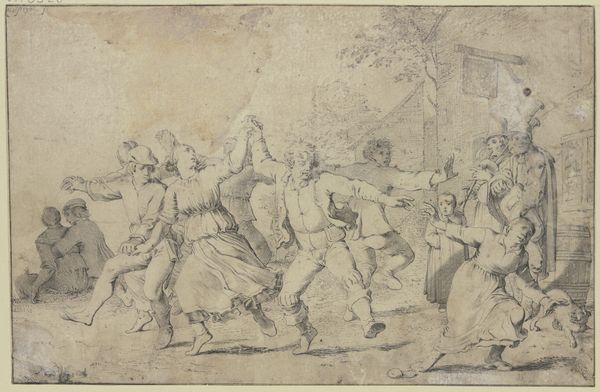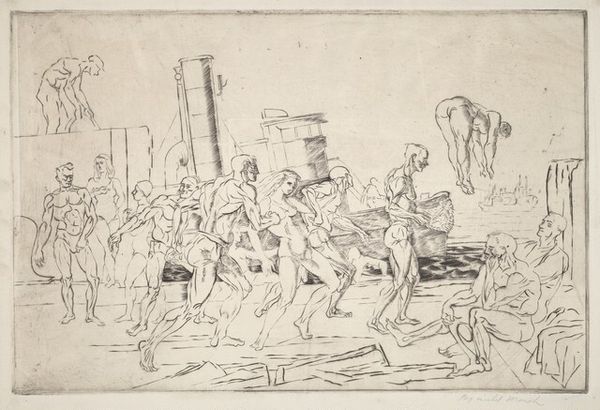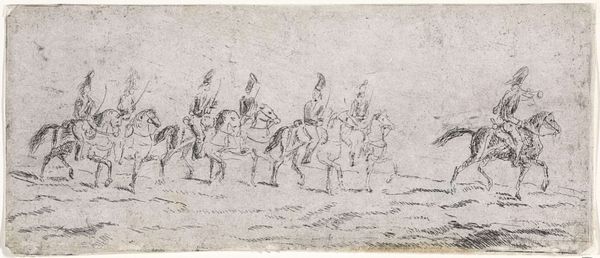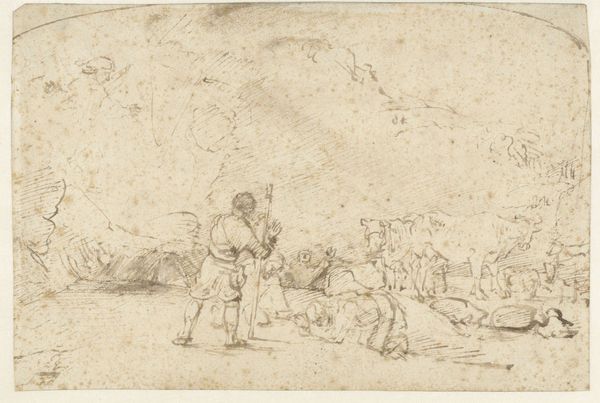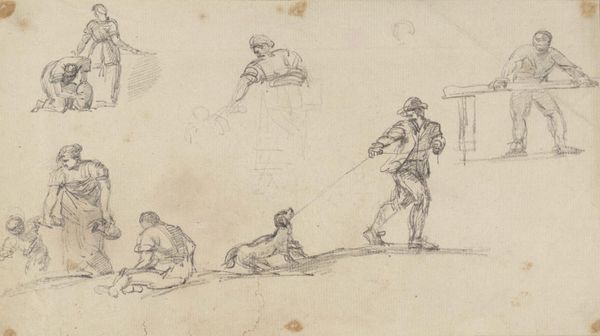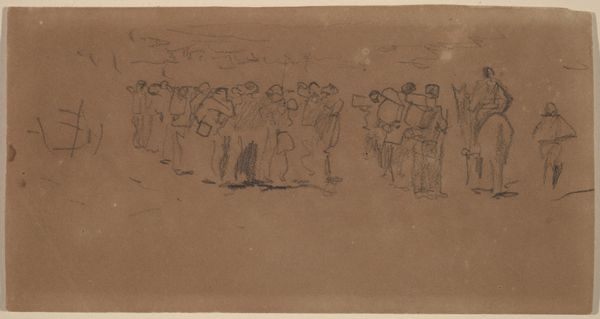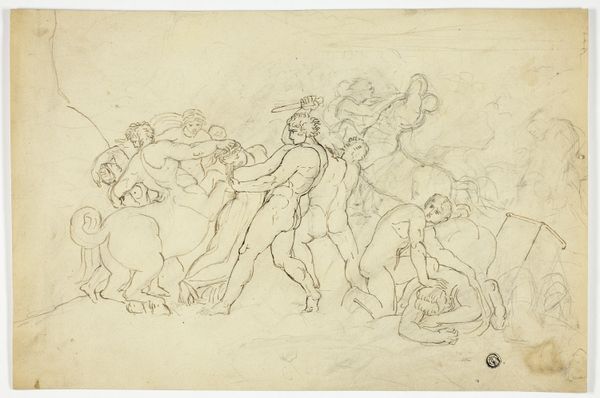
The Rescue of the Survivors of the Raft of the Medusa c. 1818
0:00
0:00
drawing, print, paper, ink, ink-drawings, graphite, pen
#
drawing
#
light pencil work
#
ink drawing
# print
#
pen sketch
#
pencil sketch
#
incomplete sketchy
#
paper
#
personal sketchbook
#
ink
#
ink drawing experimentation
#
ink-drawings
#
pen-ink sketch
#
france
#
water
#
graphite
#
sketchbook drawing
#
pen
#
sketchbook art
Dimensions: 225 × 301 mm
Copyright: Public Domain
Editor: Here we have Théodore Géricault's "The Rescue of the Survivors of the Raft of the Medusa", likely from around 1818. It looks like ink on paper, a study perhaps. The figures are so raw, so visceral. The emotion just leaps off the page. What stands out to you the most? Curator: For me, it's the artist's vulnerability laid bare. It feels like peering into his mind as he grapples with this horrifying event. This isn't just a sketch; it's a scream etched in ink. A tiny lifeboat full of souls teeters between oblivion and salvation while an almost comically large sailing ship approaches from the horizon. And the desperation… Did Géricault ever feel this abandoned, do you think? Editor: I can see that. The composition, the ship on the horizon is just the tiniest detail and the wavey lines to indicate water do emphasize the vastness of the scene. Was Géricault known for any recurring themes at that period? Curator: He was obsessed, in a way, with humanity at its most exposed, stripped bare of dignity and pretense. Think about the politics of the era; France licking its wounds after Napoleon. "The Raft of the Medusa," the painting this sketch relates to, wasn’t just about a shipwreck; it was a critique of incompetence, of a society adrift. Isn't it incredible how much story he manages to cram into a few seemingly simple lines? What does it whisper to you, knowing that? Editor: It certainly gives you a completely new appreciation of preliminary sketches like this and allows one to peer into the working practices of famous painters. Curator: Indeed! It turns history into a heartbeat. Thanks to the conversation I feel I will be forever affected whenever I now see this piece, and I may never look at history the same way again.
Comments
No comments
Be the first to comment and join the conversation on the ultimate creative platform.

